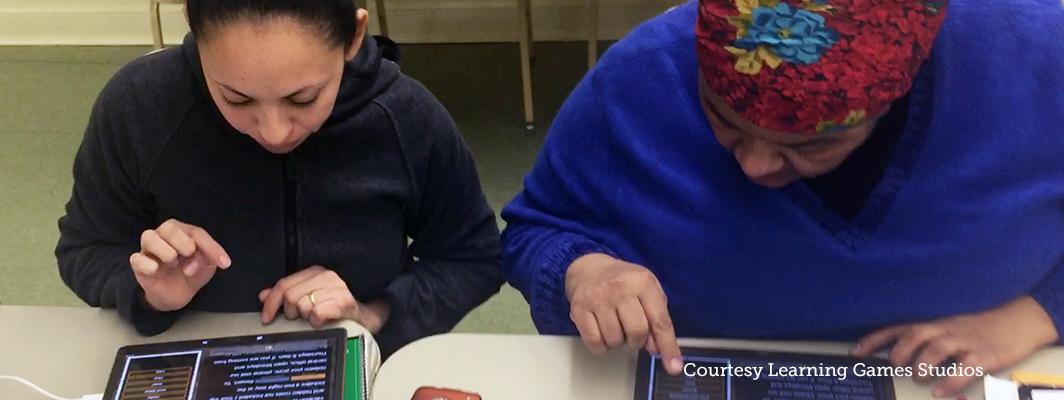
February 15, 2018 | By Ira Sockowitz
At Learning Games Studios, we’ve taken our product, Xenos Isle, from the world of academic R&D to the marketplace, reaching adult ESL learners at scale. We were also named a Barbara Bush Foundation Adult Literacy XPRIZE semi-finalist this year. Our journey has been an interesting one and in this blog post, I’m sharing three key things I’ve learned from our experiences thus far.
Government-funded adult education has an annual budget of nearly $2 billion. When combined with other sources, one estimate places this figure as high as $10 billion annually, with $200 million of that spent on digital instructional materials. However, these numbers do not translate to what individual learning providers spend.
Highly fragmented, these organizations often serve small numbers of learners and have very limited budgets for instructional materials. Entrepreneurs new to this market often spend time calling on individual providers and can easily spend more time and money acquiring their customers than they will realize in revenue, at least in the near term.
“Buying cooperatives” such as the Florida Florida Adult Technical & Distance Education Consortium (FATDEC) can represent a group of providers who are looking to invest in technology. I would advocate that many more buying cooperatives should be developed. Providers would benefit from an economy of scale in their purchasing power and entrepreneurs would more easily become sustainable, allowing scarce financial resources to be dedicated to product development, not customer acquisition.
Another important factor for entrepreneurs in this market is ensuring their products are appropriate for adult learners. Whether a product will be used in a classroom or as a supplemental self-directed product, it requires a curriculum that is research-based and aligned to adult education standards in order to provide a quality educational experience that can be measured (and funded).
Based on my experience, companies who have research that validates, or at least indicates, the efficacy of their products gain wider acceptance. While gold-standard randomized control trials are expensive, companies can conduct other forms of valid research at a reasonable cost. The key to acceptance of the findings is to have the trials conducted by third parties and with enough learners to make the findings generalizable. Two helpful guides for developers can be found here and here.
How does a company raise awareness and sell into a bifurcated market? From my experience, the answer includes establishing thought leadership in the field. By showing understanding of the needs and aspirations of learners and the pain points of their learning providers, you can build trust in your capacity to develop solutions that solve their problems. This is especially true if you are mission-driven and can show how you want to “do well by doing good.”
Vehicles for thought leadership—speaking at conferences, authoring articles and blog pieces, using social media, and conducting webinars—can help raise awareness of your product and can help make customers seek you out. Competitions can also raise your profile while serving your mission to educate. One example is the Barbara Bush Foundation Adult Literacy XPRIZE, an effort to expand the ecosystem of entrepreneurs making mobile direct-to-consumer apps to teach basic literacy skills. As one of the eight companies whose app was chosen as a semi-finalist this year, we have benefitted from their national efforts to raise awareness about adult illiteracy. There are numerous competitions that may raise your profile and even result in winning non-dilutive capital!
I would encourage any new entrepreneur to read Accelerating Change: A Guide to the Adult Learning Ed-Tech Market, learn more about the adult education market, and bring forward exciting new innovations and solutions. Notwithstanding the challenges, as the report says, “new ventures into adult education will enjoy untapped market potential as well as the chance to make a real social impact.”
By Sharin Jacob and Quinn Burke
By Dr. Kyle Dunbar and Katie Wilczak
By Elliott Barnes and Sara Mungall